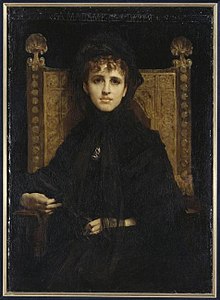세인트조지스 해협
St George's Channel

세인트 조지 해협(Welsh: Sianel San Siór, 아일랜드어: Muir Bhreatan[1])은 북쪽으로는 아일랜드 해, 남서쪽으로는 켈트 해를 연결하는 해로입니다.[2]
이름의 유래
"세인트 조지스 채널"이라는 이름은 마틴 프로비셔의 두 번째 항해 기록에 1578년에[3] 기록되어 있습니다. 성 조지가 비잔티움 제국에서 로마 영국으로 항해해 자신의 이름이 새겨진 수로를 통해 영국에 접근했다는 전설에서 유래했다고 합니다.[4] 플랜테이션(Plantations)의 이름을 따 아일랜드의 영국 정착민들이 이 이름을 널리 알렸습니다.[5]
지리학
역사적으로, "세인트 조지 해협"이라는 이름은 서쪽으로는 아일랜드와 동쪽으로는 웨일즈 사이의 모든 바다를 포괄하기 위해 "아일랜드 해" 또는 "아일랜드 해협"과 혼용되어 사용되었습니다.[5][6] 일부 지리학자들은 웨일스와 라인스터 사이의 지역에 제한을 두었고,[5][6] 가끔 남쪽으로 잉글랜드 서부와 동 먼스터 사이의 바다까지 확장하기도 했습니다.[6] 아일랜드에서 "St George's Channel"은 일반적으로 채널의 가장 좁은 부분인 웩스포드의 Carnsore Point와 펨브록셔의 St David's Head를 지칭하는 것으로 간주됩니다. 하지만 아일랜드에서는 여전히 "크로스 채널 여행" 또는 "크로스 채널 축구" 등에 대한 이야기를 들을 수 있습니다. 여기서 "크로스 채널"은 "영국으로/영국에서"를 의미합니다.[7]
2004년 세인트루이스에서 온 편지.RTE 라디오 프로그램인 Seascapes로 가는 George's Channel Shipping Company는 St George's Channel이 Howth Head와 Kilmore Quay 사이의 아일랜드 해안에 접해 있다고 말했고, 이 해역을 위해 "Irish Sea"를 사용한 프로그램의 기여자들을 비난했습니다.[8]
한계
현재 국제수로기구의 "해양과 바다의 한계"(Limits of Ocean and Sea) 판본은 "아일랜드 해와 세인트"의 남방 한계를 정의하고 있습니다. 조지의 채널 "세인트로 합류하는 선" 다윗의 머리(51°54)'N 5°19'W / 51.900°N 5.317 / 51.)에서 카르노르 지점(52°10'N 6°22'W / 52.167°N 6.367°W / )까지의 수역은 [9]두 수역을 별도로 정의하지 않습니다. 2002년 제4판 초안에는 " and St."가 누락되어 있습니다. 조지의 채널"이라는 레이블의 일부입니다.[10][11]
참고 항목
- 니코바 제도 리틀 니코바와 그레이트 니코바 사이의 해협은 세인트 조지 해협이라고도 불립니다.
- 노스 채널 (그레이트 브리튼 아일랜드)
- 모일 해협
참고문헌
- ^ "Muir Bhreatan". logainm.ie. Placenames Branch (Department of Community, Equality and Gaeltacht Affairs). Retrieved 18 September 2010.
- ^ C.마이클 호건, 2011. 아일랜드 해 eds P.Sundry & C.클리블랜드. 지구 백과사전 국가 과학 환경 위원회. 워싱턴 DC
- ^ Taylor, Isaac (1896). "St. George's Channel". Names and their histories, alphabetically arranged as a handbook of historical geography and topographical nomenclature. Rivington, Percival. p. 243. Retrieved 18 September 2010.
- ^ Room, Adrian (2006). "St George's Channel". Placenames of the world: origins and meanings of the names for 6,600 countries, cities, territories, natural features, and historic sites. McFarland. p. 326. ISBN 978-0-7864-2248-7. Retrieved 18 September 2010.
- ^ a b c Andrews, John Harwood (January 1997). Shapes of Ireland: maps and their makers 1564–1839. Geography Publications. pp. 87–88, 155. ISBN 978-0-906602-95-9. Retrieved 18 September 2010.
- ^ a b c Thomas Curtis, ed. (1839). "George's Channel (St.)". The London encyclopaedia. Vol. 10. p. 133. Retrieved 18 September 2010.
- ^ Heslinga, Marcus Willem (1979). The Irish border as a cultural divide: a contribution to the study of regionalism in the British Isles. Van Gorcum. p. 8. ISBN 978-90-232-0864-8. Retrieved 18 September 2010.
- ^ "Seascapes News Summary". RTÉ.ie. 30 September 2004. Archived from the original on 25 May 2012. Retrieved 18 September 2010.
- ^ "Corrections to pages 12 and 13" (PDF). Limits of Oceans and Seas, 3rd edition. International Hydrographic Organization. 1953. Retrieved 28 December 2020.
- ^ Choo, Sungjae (2007). "The Cases of International Standardization of Sea Names and Their Implications for Justifying the Name East Sea" (PDF). Journal of the Korean Geographical Society. 42 (5): 751, Table 3, footnote. Retrieved 15 August 2012.
- ^ "2002 Draft of Limits of Oceans and Seas". IHO. Retrieved 25 May 2016.


